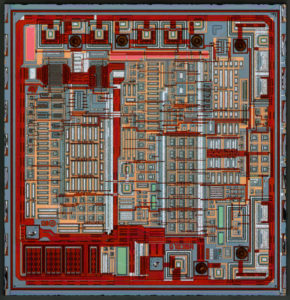Crack Microcontroller PIC18F4515 Code
We can Crack Microcontroller PIC18F4515 Code, please view the Microcontroller PIC18F4515 features for your reference:
Like previous PIC18 devices, the PIC18F2X1X/4X1X family includes a feature that allows the device clock source to be switched from the main oscillator to an alternate low-frequency clock source. PIC18F2X1X/4X1X devices offer two alternate clock sources.
When an alternate clock source is enabled, the various power managed operating modes are available. Essentially, there are three clock sources for these devices:
· Primary oscillators
· Secondary oscillators
· Internal oscillator block
The primary oscillators include the External Crystal and Resonator modes, the External RC modes, the External Clock modes and the internal oscillator block when facilitate the process of Crack Microcontroller PIC18F25K22 Program. The particular mode is defined by the FOSC3:FOSC0 configuration bits. The details of these modes are covered earlier in this chapter.
The secondary oscillators are those external sources not connected to the OSC1 or OSC2 pins. These sources may continue to operate even after the controller is placed in a power managed mode. PIC18F2X1X/4X1X devices offer the Timer1 oscillator as a secondary oscillator. This oscillator, in all power managed modes, is often the time base for functions such as a real-time clock.
In addition to being a primary clock source, the internal oscillator block is available as a power managed mode clock source. The INTRC source is also used as the clock source for several special features, such as the WDT and Fail-Safe Clock Monitor.
The clock sources for the PIC18F2X1X/4X1X devices are shown in Figure 2-8. See Section 22.0 “Special Features of the CPU” for Configuration register details by Crack IC PIC18F2221 Firmware. The OSCCON register (Register 2-2) controls several aspects of the device clock’s operation, both in full power operation and in power managed modes.
The System Clock Select bits, SCS1:SCS0, select the clock source. The available clock sources are the primary clock (defined by the FOSC3:FOSC0 configuration bits), the secondary clock (Timer1 oscillator) and the internal oscillator block. The clock source changes immediately after one or more of the bits is written to, following a brief clock transition interval when Crack Microcontroller PIC18F4515 Code.
The SCS bits are cleared on all forms of Reset. The Internal Oscillator Frequency Select bits (IRCF2:IRCF0) select the frequency output of the internal oscillator block to drive the device clock. The choices are the INTRC source, the INTOSC source (8 MHz) or one of the frequencies derived from the INTOSC postscaler (31.25 kHz to 4 MHz).
If the internal oscillator block is supplying the device clock, changing the states of these bits will have an immediate change on the internal oscillator’s output. On device Resets, the default output frequency of the internal oscillator block is set at 1 MHz to ease the procedures of Crack Microcontroller PIC18F25K22 Program. When a nominal output frequency of 31 kHz is selected (IRCF2:IRCF0 = 000), users may choose which internal oscillator acts as the source before Crack Microcontroller PIC18F4515 Code.
This is done with the INTSRC bit in the OSCTUNE register (OSCTUNE<7>). Setting this bit selects INTOSC as a 31.25 kHz clock source by enabling the divide-by-256 output of the INTOSC postscaler. Clearing INTSRC selects INTRC (nominally 31 kHz) as the clock source to Recover MCU. This option allows users to select the tunable and more precise INTOSC as a clock source, while maintaining power savings with a very low clock speed.
Regardless of the setting of INTSRC, INTRC always remains the clock source for features such as the Watchdog Timer and the Fail-Safe Clock Monitor. The OSTS, IOFS and T1RUN bits indicate which clock source is currently providing the device clock. The OSTS bit indicates that the Oscillator Start-up Timer has timed out and the primary clock is providing the device clock in primary clock modes.


